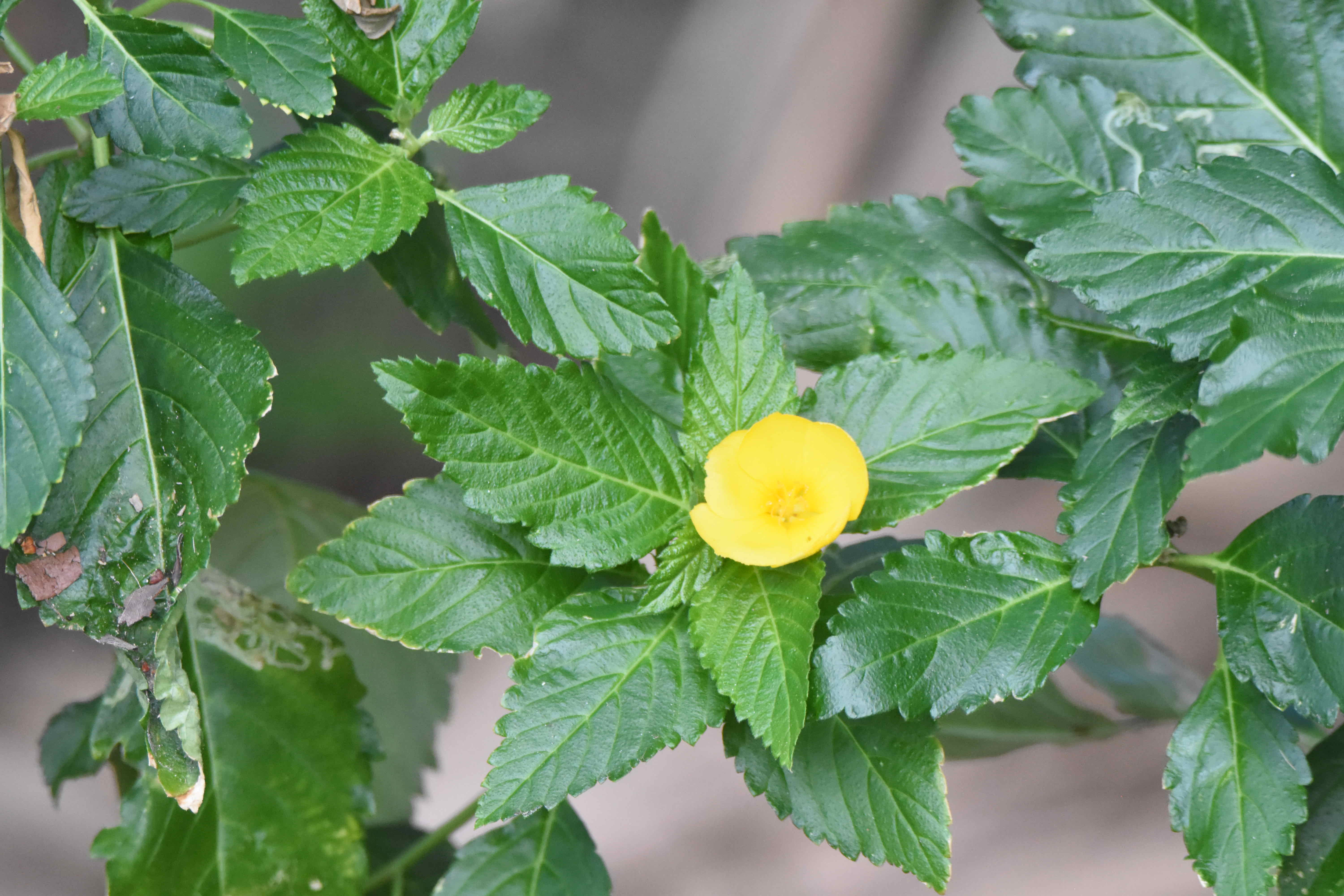
Yellow alder, photographed at Bill Baggs Cape Florida State Park, Key Biscayne, Miami-Dade County, in February 2019.
Yellow alder, Turnera ulmifolia. So many names. So many uses. Which isn't all that surprising for a plant found in so many places around the globe.
It's a small, woody shrub, typically two to three feet high, with a spread of two to three feet. It has few branches but multiple stems emerging from the ground. The leaves are serrated, somewhat oval shaped, about two to four inches long, shiny, dark green and deeply veined.
Yellow alder grows in full sun or in part shade; it tends to be fuller, more branched, when grown in sunlight. It produces bright yellow flowers that are about the size of a quarter and open at day and close at night; it blooms all year. One negative: it produces a lot of seeds and can get out of control. In fact, it's considered an invasive in parts of the Pacific.
There's some question whether yellow alder is native to Florida. The Institute for Regional Conservation in Delray Beach says it's not a Florida native but the U.S. Agriculture Department says it is, with a range that includes Broward, Miami-Dade and a few counties on the West Coast. The Florida Atlas of Vascular Plants, lists it as non-native but notes that it has been treated as native by some authorities over the years. It says yellow alder was first collected in Key West in 1896. In any regard, it's frequently used as a ground cover, foundation plant or in butterfly gardens. In places around the globe yellow alder is important medicinally.
Its native range (beyond our shores) extends through the Bahamas, the Caribbean, Mexico, Central America and parts of South America. But it's naturalized to parts of tropical Africa, Asia, Madagascar, Australia, some Indian Ocean islands and the Pacific. Florida is the only state among the lower 48 where it grows wild. Favorite habitats include open woods and disturbed areas, such as roadsides and abandoned fields.
Yellow alder is a staple of traditional medicine, particularly in the Caribbean. It's used to treat stomach problems, including constipation and diarrhea, colds, flu, menstrual cramping, heart palpitations, hair loss, thrush and other conditions. It's used as an aphrodisiac for men and women. The leaves are used to make a tea.
How effective yellow alder is we don't know (some studies suggest it might have anti-inflammatory, anti-ulcer and antiseptic properties), but its use to make medicines is one of the reasons, along with its beauty, that it's been exported to tropical places where it's become naturalized. As we noted above, it produces a lot of seeds and it has become an invasive menace in many places, including India, Australia, some Pacific islands, including Hawaii, parts of South America and even parts of the Caribbean, including Puerto Rico and both the U.S. and British Virgin Islands. It is not considered invasive in Florida.
Yellow alder is also known as buttercups, yellow buttercups, Bahamian buttercups, Cuban buttercups, buttercup bush, sage rose, bankers bush, West Indian holly, yellow elder and a few others that have escaped our attention. Our absolute favorite, though, is ramgoat dashalong (also spelled ram-goat or ram goat dashalong), so called because it's a favorite food of goats.
It is a member of Turneraceae, though some sources put it in Passafloraceae, the passion flower family.
Bill Baggs Cape Florida State Park



